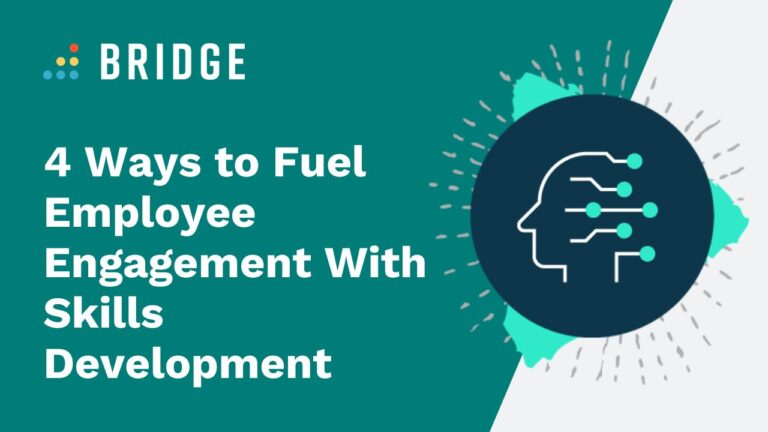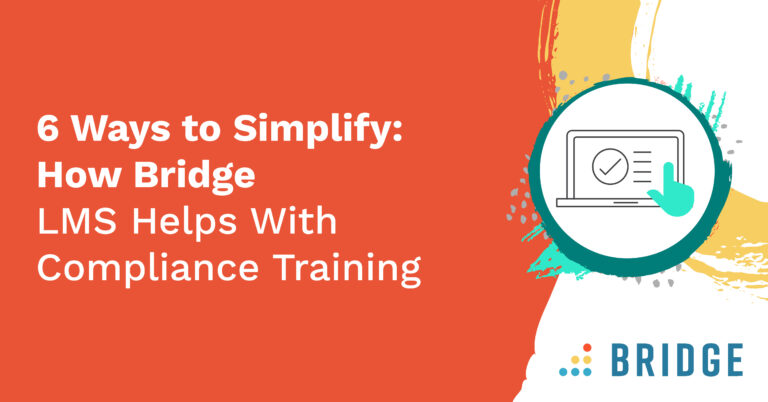Equipping your people with the skills and capabilities to drive success through meaningful L&D opportunities is an investment in the future. To gain a competitive advantage and navigate potential disruption, your organization needs a proactive approach to employee development.
When employees are engaged with their work and culture, have opportunities to advance and grow in their careers, and work toward a common goal, you drive results across the board.
Why Skills Development Benefits Your Entire Organization
Leaders are increasingly looking to their people to bring certainty, increase agility, and drive business success. According to a PwC survey, employee development initiatives are at the top of the agenda for almost 80% of business leaders who report upping investments in people to drive growth.
For organizations, the need to upskill and reskill existing talent is clear. Results from the same survey reveal that 60% of business execs have increased career advancement and upskilling opportunities to attract and retain top talent.
When you invest in your people, promote a culture that values development, and embed skill-building initiatives into learning programs, you improve organization-wide performance metrics. According to research by McKinsey, organizations can boost engagement by up to 50% and raise productivity by 40% when they align goals and processes, match skills, and give employees the opportunity to fully use their existing talents.
To fully unlock your people’s potential and accelerate business performance, learning and development must be at the foundation of your organization, while ensuring close alignment with business goals, and underpinned with meaningful and personalized learning opportunities.
LEARN HOW SKILLS DEVELOPMENT BENEFITS YOUR ORGANIZATION | ‘What Is Talent Mobility? Plus, What It’s Not!’
4 Skills-Based Learning and Development Practices to Engage Your People
Engaging your workforce through skills development initiatives requires a focus on culture and strategy. An environment that provides ongoing, flexible opportunities for people to develop inspires, motivates, and promotes growth.
Here are four actionable ways to supercharge your skills development strategy and drive employee engagement metrics:
1) Reward and Incentivize Employee Development and Growth
Show employees that your organization is invested in them with personalized development pathways tied to their goals and company-wide recognition for training.
Each employee should have the chance to co-create a development path that’s mapped out with the skills and opportunities to progress toward their desired role. Enhance pathways by adding reaffirming feedback from mentors and peers, suggesting courses, and connecting employees with internal roles or projects they may not have considered based on their skillsets.
Career advancement and lateral moves are important, but your company should regularly show appreciation and recognize employees for their hard work and commitment. Findings in a Deloitte report show that three out of four employees agree that being recognized and rewarded for developing skills through non-monetary means such as talent mobility, credentials, or certifications would increase their performance.
Small initiatives like shoutouts and digital certifications can make people feel seen and spark an enthusiasm for learning that can only improve their levels of engagement.
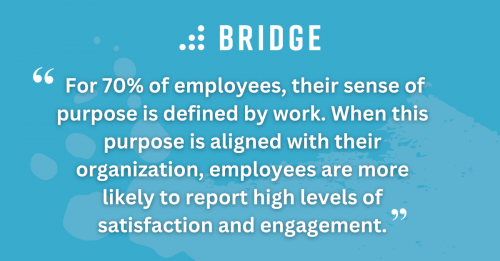
WANT TO ENHANCE YOUR L&D PROGRAMS? READ THIS! | ‘Bridge Journeys for Employee Development: How to Pave the Way for Success’
2) Help Employees Find What Drives Them
Ambitions and motivations are deeply personal to each individual, and reframing development around these career drivers could give employee engagement a boost. In fact, McKinsey research finds that, for 70% of employees, their sense of purpose is defined by work. When this purpose is aligned with their organization, employees are more likely to report high levels of satisfaction and engagement.
By focusing development on the “why?” and exploring employees’ motivations, aspirations, and how well they feel their needs are being met during career conversations, they can work to uncover the things they enjoy and where they want to develop.
Conversations focused on skills instead of job titles or roles show employees the opportunities available to them across their entire company, encouraging them to think beyond their current job. When you align career drivers with team and organizational goals, it gives employees a greater sense of purpose.
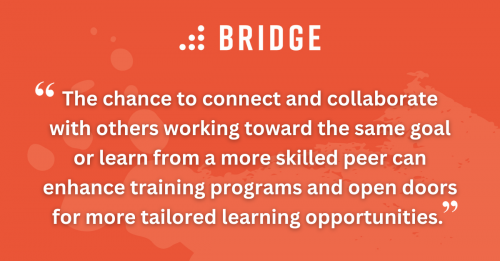
MORE WAYS TO IMPROVE EMPLOYEE PRODUCTIVITY | ‘3 Employee Engagement Ideas for Remote Workers’
3) Connect Learners With Skills Communities
Encourage teamwork, build trust, and increase employee engagement with your culture by creating communities of learners based on shared aspirations. With an understanding of which skills exist within the organization and the areas employees want to develop, learners can come together to act as a source of knowledge and help one another.
The chance to connect and collaborate with others working toward the same goal or learn from a more skilled peer can enhance training programs and open doors for more tailored learning opportunities. Learners can see how skills are performed in the organization and practice with the support of a mentor who can guide them with feedback.
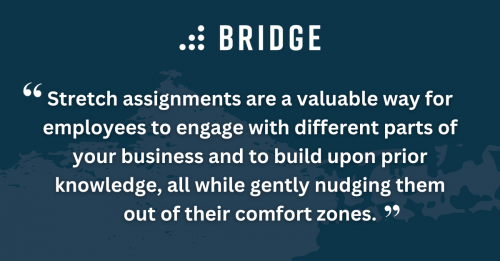
DISCOVER HOW TO CREATE A CULTURE OF LEARNING | ‘Your Employees Are Busy—Here’s How to Offer Protected Learning Time’
4) Use Stretch Assignments to Build Skills While On the Job
For learners to develop the skills and knowledge necessary to adapt and advance in their careers, they need hands-on experience. Stretch assignments give learners the chance to practice, apply, and perfect the skills needed for current and desired roles.
Experiential learning is highly effective, especially in a remote environment. According to McKinsey, learners are able to recall almost seven times more information with hands-on experience compared to traditional classroom-style methods alone.
Stretch assignments are a valuable way for employees to engage with different parts of your business and to build upon prior knowledge, all while gently nudging them out of their comfort zones. Stretch assignments also allow your people to tap into their expertise in new and more creative ways, and build confidence in their ability to meet unexpected challenges.
Nonetheless, this isn’t about throwing someone in at the deep end, so make sure learners feel able to reach out if they need a helping hand.
Examples of stretch assignments to incorporate as part of professional development programs include:
- Managing a volunteer or intern
- Executing a new or high-priority project
- Participating in the company’s strategic planning process
- Organizing and leading an event or meeting
- Improving a project, department, or operation
EXPLORE ACTIONABLE WAYS TO DEVELOP SKILLS | ‘How to Train Employees on Soft Skills’
Uncover L&D Strategies to Drive Employee Engagement
Bridge is an employee development platform that transforms organizations by bringing together learning, skills and performance in one unified experience. It can enhance peer-to-peer connection, improve alignment, and help identify skills and talent needed to move your business forward.
For more practical ways to strengthen employee engagement and improve business results, download our ebook ‘The Powerful Link Between Learning and Employee Engagement’.
